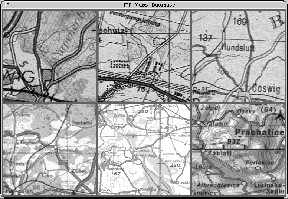
Figure 17.9: A Sample Set of RGB Images of Terrain Maps, Provided to Us by ASAS/JPL. Maps are of various sizes, scales, resolutions, saturation, and intensity ranges. They also contain diverse topographic elements and cartographic techniques.





Analysis of terrain maps, digitized as (noisy) full-color images, is the first MOVIE application, funded by the ASAS agency in parallel with the base system development project.
A sample set of map images, provided to us by ASAS/JPL, is presented in Figure 17.9. The project has been split by the agency into the following stages:

Figure 17.9: A Sample Set of RGB Images of Terrain Maps, Provided to Us by
ASAS/JPL. Maps are of various sizes, scales, resolutions, saturation, and
intensity ranges. They also contain diverse topographic elements and
cartographic techniques.
This problem, posed by the DMA and addressed by several groups within the ASAS TECHBASE program (Cartography group at JPL, MOVIE group at NPAC, Coherent Research, Inc. (CRI) at Syracuse), turns out to be highly nontrivial, especially above certain critical accuracy level of order 80%.
The JPL approach to Map Separates is based on the back-propagation techniques. The CRI approach to map understanding is based on the expert systems techniques. Our MOVIE group approach is based on machine vision techniques. Our goal is to construct the complete map recognition system, including both separation and understanding components, structured as low- and high-level layers of the vision system and coupled by the feedforward and feedback pathways.
The problem involves diverse computational domains such as image processing, pattern recognition, and AI, and it provided the initial driving force for developing the general-purpose MOVIE system based support. At the current stage, we have completed the implementation of a class of early/medium vision algorithms for map separates, based on zero-crossings for edge detection and RGB clustering for segmentation. The resulting techniques are comparable in quality and give higher performance than the backpropagation-based approach.
Our conclusion from this stage is that further quality improvement in the separation process can be achieved only by coupling the low-level pixel-based techniques with the high-level approaches, based on symbolic representations, and by providing the feedback loop from the recognition layers to the separation layer.
From the computational perspective, the currently implemented layers are based on the MOVIE field algebra support for image processing. Two trial user interfaces constructed so far were based on the X/Motif interface for two-dimensional graphics and on the AVS interface for three-dimensional graphics. In preparation is a more complete tool, based on uniform two- and three-dimensional graphics support in MOVIE and providing the testbed environment for evaluating various techniques, employed so far to handle this complex problem. As part of this testbed program, we have also recently implemented the backpropagation algorithm for map separates [Simoni:92a], following the techniques developed originally by the JPL group.
In the following, we discuss in more detail various algorithms involved in this problem, with the focus on the RGB clustering techniques. The material presented here is based on an internal report [Fox:93b].




